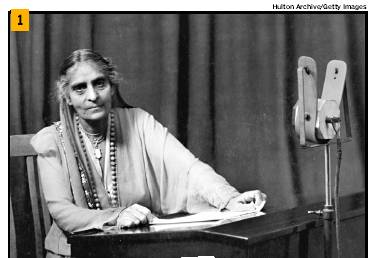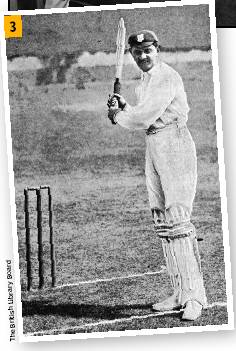Indians in the UK
Contents |
The first Indians, and other firsts
Britain’s first desi was a Bengali boy
The first woman to study law at Oxford was an Indian, and so was the man behind Britain’s first spa. A new book tells the story of Indian immigrants in the UK
Monica Bathija
A recorded presence since 1614
In 1793, Sake Dean Mohamed, born in Bihar in 1759 and having worked his way up in the East India Company, moved to Cork, Ireland where he wrote the first known Indian travel narrative in English. That’s not the only first to his credit — a shrewd entrepreneur, Mohamed migrated to London in 1808 with his wife Jane and children and opened the first Indian coffee house there. Then, when that business began to fail, he moved to Brighton, reinvented himself, and in 1821 revived the town’s spa culture by opening ‘Vapour Baths’. He went on to become the official ‘shampooing surgeon’ of George IV.
If the predominant myth about Britain’s contemporary South Asian population is that they arrived after the end of World War II, mostly cheap labour from the subcontinent being sought to rebuild a war-torn Britain, Susheila Nasta and Florian Stadtler’s new book Asian Britain: A Photographic History, dispels the notion. The Asian presence in Britain dates back to over 400 years ago when a small population had arrived as early as the formation of the East India Company in 1600.
“One of the first recorded presences of an Indian in Britain was in 1614 when Patrick Copland, a chaplain in the East India Company, returned to England with a Bengali boy,” says Nasta, literary critic and editor of Wasafiri, a literary magazine. The boy was christened Petrus Papa or Peter Pope and brought up as a Christian.
The book explores the interconnections between Britain and India from the period of the so-called ‘Raj’ to the present, directing the lens, so to speak, in the direction of Indians in Britain rather than the other way round. A lot of the focus on Raj history has largely been on the British in India, so the book, says Nasta, “looks, if you like, at the other side of this story, the obvious fact that due to the long trading and political connections between both countries, the traffic was two way.”
Some firsts
Through pictures, the book tells the stories of Cornelia Sorabji, the first woman to read law at Oxford way back in 1892, and suffragette Sophia Duleep Singh who, exploiting her public profile as Queen Victoria’s god-daughter, drew attention to her fight for women’s rights and was often seen selling The Suffragette outside Hampton Court Palace. And though Keith Vaz’s election in 1987 was an important symbolic moment — Vaz was the first Asian MP in Britain since 1929 — the photographs remind us that it was actually Dadabhai Naoroji who was Britain’s first Asian MP in 1892, his concerns ranging from the housing conditions of his Finchley constituents to the imperial drain on India’s resources brought about by empire.
The interconnectedness of the two countries is also a story that moves from the 1886 Colonial and Indian Exhibition where Indians were featured as living exhibits to the over 1.4 million troops that fought alongside British soldiers in the trenches during World War 1. It’s a story about the RAF recruits that flew planes in the Battle of Britain and sari-clad Indian volunteers who helped during air raids. There were also lascars or seamen who ‘stoked the engine of Empire on British steamships’ and were forced by the arduous conditions on board to find more lucrative sources of employment as well as ayahs who worked as nannies for English families on the long sea voyage home and were left to fend for themselves soon after arrival. Not to mention the interesting story where around the time Mohandas Gandhi made his way to Britain to study law, Abdul Karim, who went on to become the Queen’s closest political advisor, first arrived in the royal household as an ordinary waiter.
The elites and the common man all form a part of the narrative. ‘’We wanted to highlight the long history of Asian contribution to Britain but to not try to hide the troubled times or the racism or the difficulties that have been experienced,’’ says Nasta, who has also directed two research projects looking at the early migrant histories of South Asians in Britain.
Migration is, at the best of times, a fraught issue and when you throw colonialism into the mix, it makes for a history that is complicated and intriguing. ‘’There is always a doublespeak going on as is evident from India’s involvement in WW2 which was welcomed and then there was failure to acknowledge this after Independence. Following the migrations of the 1960s, Asians were viewed as strangers flooding Britain’s shores,’’ says Nasta. ‘’And the point about all the pictures is not only what they say but what they don’t say, and the thoughts they provoke about their subject’s different lives in Britain.’
Indians:largest foreign voter group in UK
Jan 30 2015, Kounteya Sinha
6.15L: Indians form largest foreign voter group in UK
Almost 4 million voters about one in 10 of the entire electorate in England and Wales have been found to be born abroad. Indians have emerged the largest chunk in this foreign born electorate.
As many as 615,000 Indians will vote in the upcoming election. The second largest chunk of foreign voters will be Pakistanis 431,000.
Records show the Commonwealth migrant communities (in particular from India, Pakistan, Bangladesh, Nigeria and South Africa) along with the Irish Republic will have the highest numbers of potential voters in May 2015. EU nationals despite their large and growing presence in the UK will be heavily under-represented in May 2015 as a large majority of them have not acquired British citizenship yet.
The migrant electorate is heavily concentrated in London 19 of the 20 seats with the largest migrant voter shares are in Greater London.
The migrant electorate could have decisive power in at least 70 seats.
Property in Mayfair
The Times of India Feb 24 2015
Kounteya Sinha
Indians have overtaken Russians to become the wealthiest landlords in Britain’s most expensive commercial district — Mayfair in London. Indian purchasers are now the largest group of overseas buyers in Mayfair comprising 25% of all purchasers and well ahead of other Asian and European buyers (19% of all purchasers) and Russians and Middle Eastern buyers who now comprise just 13% each. Indian billionaires have invested as much as £881million ($1.5 billon) in central London properties in past 18 months. Up to £440 million ($750m) was spent between wealthy home owners across 221 capital homes in 2013 with Mayfair and Belgravia being the most popular locations. Renowned Mayfair estate agency Wetherell estimate that at the height of each British summer some 3,000 ultrahigh net worth (UHNW) Indian families make Mayfair their address, living in London homes, renting property or staying in luxury hotels.
Figures from the land registry show that overseas based Indian buyers spent almost £450 million purchasing some 221 residential properties in prime central London with the top three most popular locations being Mayfair, St Johns Wood and Belgravia.
Indians have also accounted for more than one in four purchases in central London during the same period. That is second only to Britons, with Russians and Middle Eastern buyers together adding up to 13%.
Wetherell said, “Russians have long ranked first among foreign buyers in terms of their spending power. There’s a new nationality encroaching on their prime property turf — Indians. Indian buyers will typically spend anything from £1million to £20 million on purchasing a home in Mayfair, with 70% buying an apartment or penthouse and the balance acquiring a mansion.” Wetherell highlight that super-prime developers owned by UK or overseas based UHNW Indian families are al so set to undertake over £500 million of new residential development in Mayfair over the next five years.
Examples include the Lodha Group, which recently purchased the Canadian embassy building in Grosvenor Square for £306 million. They plan to turn the 135,000sqft property into a scheme of over 40 luxury residences.
Another luxury developer Luxlo has undertaken a series of residential developments in Mayfair, including penthouses in Park Lane, which have sold for over £4,000 a sqft and Aion, whose ultra-prime apartment at 18 Grosvenor Square is priced at a record £5,130 per sqft.


